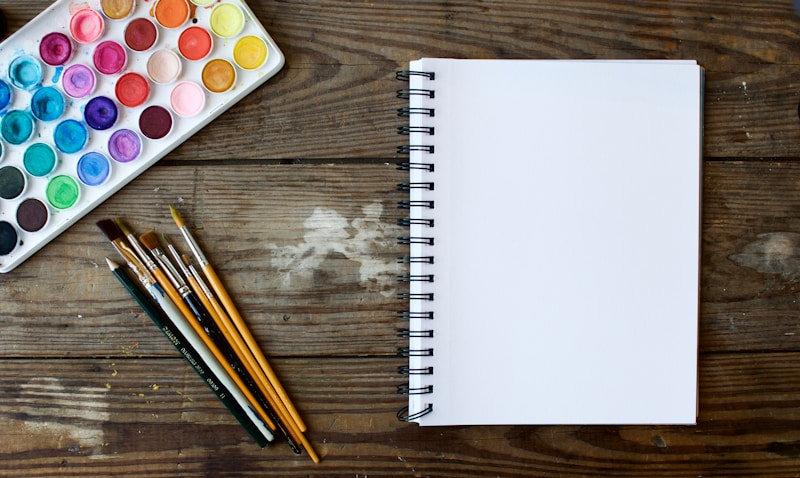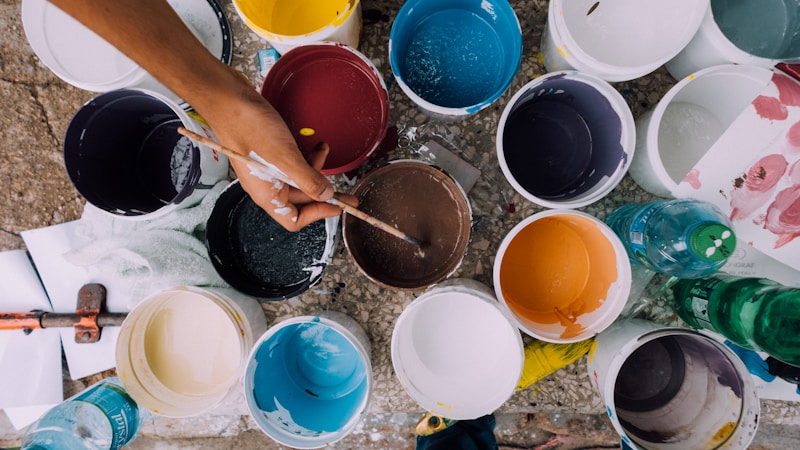9 Questions
What are the classical branches of visual art?
What is the branch of philosophy that explores the nature of art and related concepts?
What is the oldest known art?
What is the linguistic turn controversy?
What is anti-art?
What are the three steps of artistic creation?
What is the UN's Convention for the Safeguarding of the Intangible Cultural Heritage?
What are the Realist, Objectivist, and Relativist approaches used for in art?
What is the impact of the destruction of cultural property?
Summary
Art: A Brief History and Overview
-
Art is a diverse range of human activity that involves creative or imaginative talent expressive of technical proficiency, beauty, emotional power, or conceptual ideas.
-
There is no agreed definition of art, and its interpretation has varied greatly throughout history and across cultures.
-
The classical branches of visual art are painting, sculpture, and architecture. Other forms of art include theatre, dance, literature, music, film, and interactive media.
-
Aesthetics is the branch of philosophy that explores the nature of art and related concepts such as creativity and interpretation.
-
The oldest known art dates back to early prehistoric times, including shell engravings, eagle talons, and snail shells.
-
The first undisputed sculptures and similar art pieces were found at the Caves and Ice Age Art in the Swabian Jura UNESCO World Heritage Site, dating between 43,000 and 35,000 BC.
-
Many great traditions in art have a foundation in the art of one of the great ancient civilizations such as Ancient Egypt, Mesopotamia, Greece, Rome, as well as Inca, Maya, and Olmec.
-
Renaissance art emphasized realistic depiction of the material world and the place of humans in it, while Islamic art focused on geometric patterns, calligraphy, and architecture.
-
The 19th and 20th centuries saw a host of artistic movements, such as academic art, Symbolism, impressionism, fauvism, and postmodernism.
-
Artistic skills and ideas have often been spread through trade, such as the Silk Road, which allowed Hellenistic, Iranian, Indian, and Chinese influences to mix.
-
The creative arts are often divided into more specific categories, such as media, genre, styles, and form.
-
Art can be something that stimulates an individual's thoughts, emotions, beliefs, or ideas through the senses, with goals beyond pure creativity and self-expression, such as communicating ideas, creating a sense of beauty, exploring the nature of perception, or generating strong emotions.
-
Art has been described as a vehicle for the expression or communication of emotions and ideas, a means for exploring and appreciating formal elements for their own sake, and as mimesis or representation.An Overview of Art: Form, Function, and Public Access
-
Art can be defined by its physical composition, including non-semantic aspects such as color, texture, and space, as well as principles of visual design such as balance and harmony.
-
There are three schools of philosophy regarding art: formalism, which emphasizes aesthetic properties of art; intentionalism, which emphasizes authorial intent in determining meaning; and post-structuralism, which examines art's significance in cultural contexts.
-
Art can connote mastery of a medium or language, conveying meaning with immediacy or depth, and expressing feelings, thoughts, and observations.
-
Art has had a variety of functions throughout history, including non-motivated purposes integral to human nature, and motivated purposes intended to bring about change, comment on society, convey emotion, address psychology, illustrate other disciplines, sell products, or communicate.
-
Artistic creation can be divided into three steps: preparation, execution, and appreciation, with the latter including critique and reflection.
-
Public access to art has evolved over time, with periods of availability to large parts of society, particularly in cheap media such as pottery, textiles, and wood, and the development of printmaking and widespread reproduction of art.
-
Public buildings and monuments, as well as private collections, have also made art accessible to wider audiences, with the emergence of public museums and art education programs in schools.
-
Museums have played an important role in making art available to everyone, but also influence the way art is perceived by the audience.
-
Despite attempts by artists to create art that cannot be bought and sold as a status object, art remains a marker of wealth and social status, with some works only understood by an elite educated in the art world.Art: Controversies, Theory, Arrival of Modernism, Classification Disputes, and Value Judgment
-
Art has been controversial throughout history, with reasons including religious, political, and iconographic content, as well as the conventions and aesthetics of the time.
-
The function of art changed with the arrival of Modernism in the late 19th century and postmodernism in the late 20th century, leading to debates about the role of art in society and its definition.
-
The linguistic turn controversy debated the extent to which the conceptual encounter with art dominates over the perceptual encounter, with influential theorists such as Judith Butler, Luce Irigaray, Michel Foucault and Jacques Derrida.
-
Classificatory disputes in the 20th century have included cubist and impressionist paintings, Duchamp's Fountain, conceptual art, and video games, often reflecting societal values and concerns.
-
Anti-art intentionally challenges established parameters and values of art, with examples including Dadaism, Situationist International, and the Young British Artists.
-
Architecture and advertising are also considered art forms, as they involve the creation of objects where practical considerations of use are essential.
-
Art is often used to apply judgments of value, with the term subjectively flavored and based on aesthetic satisfaction, but not always requiring it.
-
The Realist, Objectivist, and Relativist approaches are used to assess the aesthetic value of art, with the intentionalists holding that reference to intentions is essential in fixing the correct interpretation of works.
-
The New Criticism school debated whether the aesthetic intentions of the artist should be associated with the criticism and evaluation of the final product of the work of art, or if the work of art should be evaluated on its own merits.
-
Disputes about whether or not to classify something as art are referred to as classificatory disputes about art, with philosopher David Novitz arguing that they are more often disputes about societal values and where society is trying to go than about theory proper.
-
The definition and evaluation of art has become especially problematic since the 20th century, with the power of language and rhetorical tropes in art history and historical discourse explored by Hayden White.
-
The status of an artifact as a work of art results from the ideas a culture applies to it, rather than its inherent physical or perceptible qualities, according to Arthur Danto's thought experiment.The Definition of Art and its Relation to Aesthetics and Culture
-
The debate over the definition of art continues, with some arguing that art must have an aesthetic appeal, while others believe that social and political commentary can also qualify as art.
-
The revision of what is popularly considered aesthetically appealing can lead to a re-invigoration of aesthetic sensibility and a new appreciation for artistic standards.
-
Schools of thought in art propose different ways of defining quality, but they generally agree that the value of a work of art is determined by its ability to transcend its medium and evoke a universal emotional response.
-
Art is often intended to connect with human emotion and communicate feelings, and it can be seen as an exploration of the human condition.
-
The development of artificial intelligence and its uses in image creation may require a re-evaluation of aesthetic theory in art history.
-
Legal issues in art include forgeries, plagiarism, replicas, and works based on other art, as well as trade and export regulations and efforts to protect cultural heritage.
-
International organizations such as the UN, UNESCO, and Blue Shield International work to protect cultural heritage and intervene in conflicts or disasters that threaten it.
-
The destruction of cultural property can have a significant impact on the identity and well-being of individuals and communities, contributing to displacement and flight.
-
UNESCO's Convention for the Safeguarding of the Intangible Cultural Heritage aims to protect the diversity of cultural identity.
-
There are many different schools of thought on what constitutes art, and the definition of art is constantly evolving.
-
Art has the power to evoke emotion and communicate complex ideas, and its value is often determined by its ability to transcend its medium and connect with a universal audience.
-
Legal issues in art include efforts to protect cultural heritage and regulate trade and export of works of art, as well as issues of plagiarism, forgery, and replicas.
Description
Test your knowledge of the fascinating world of art with our Art History quiz! From ancient cave paintings to modern masterpieces, this quiz covers the diverse range of human activity that is art. Explore the different forms of art and the controversies surrounding its definition, while learning about the role of aesthetics and culture in shaping our understanding of art. Whether you are an art enthusiast or just curious about the subject, this quiz is a fun and educational way to expand your knowledge of the world of art.



